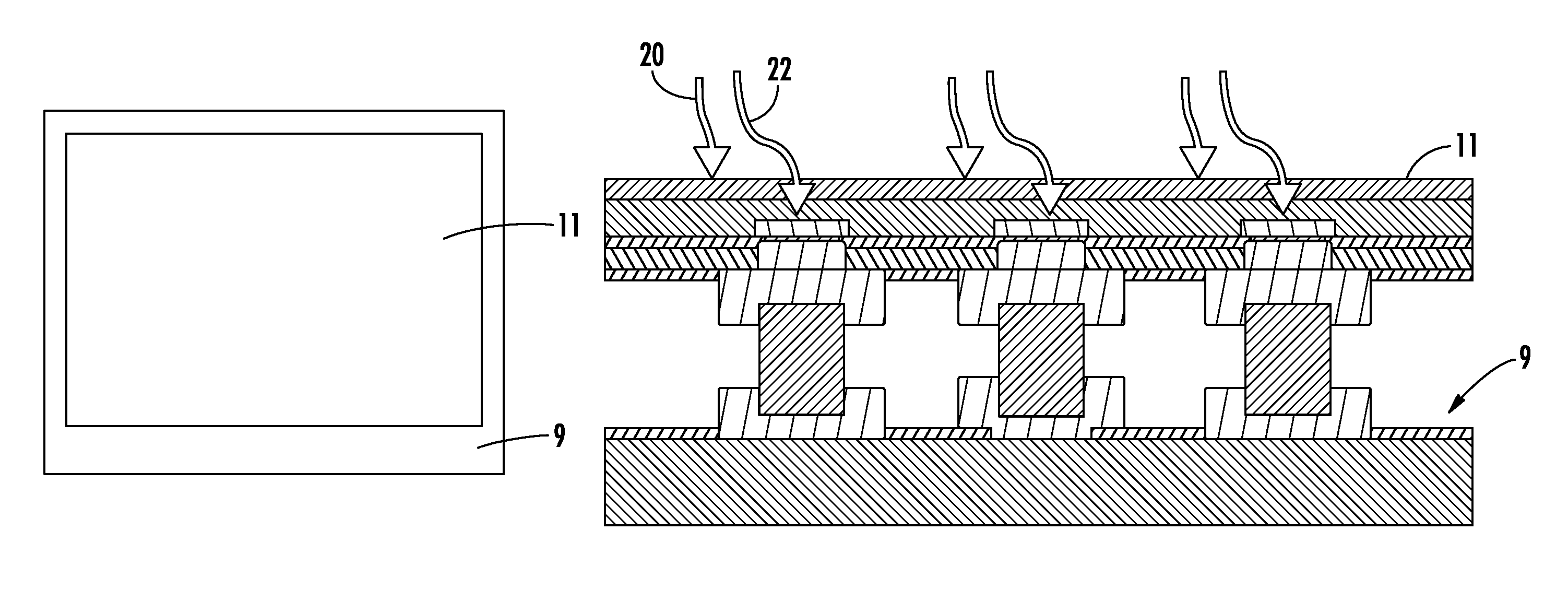Perforated blocking layer for enhanced broad band response in a focal plane array
a focal plane array and blocking layer technology, applied in the field of photodetectors, can solve the problems of inability to image visible, increase power consumption, size and cost of cameras that utilize such sensors, and thermal sensing alone is not capable of imaging through common window materials. , to achieve the effect of enhancing visible response and enhancing visible respons
- Summary
- Abstract
- Description
- Claims
- Application Information
AI Technical Summary
Benefits of technology
Problems solved by technology
Method used
Image
Examples
Embodiment Construction
[0028]As used herein, the term “blocking layer” can refer to a surface layer, such as a back surface layer, of a photodiode which is incident to a radiation directed to the photodiode. Embodiments described herein include photodetector arrays that have been processed with a patterned etch of the substrate or remaining buffer (blocking) layer, which is the primary layer in the optical path of the incoming photon flux. Reference will now be made in detail to the present embodiments, examples of which are illustrated in the accompanying drawings. Wherever possible, the same reference numbers will be used throughout the drawings to refer to the same or like parts.
[0029]Notwithstanding that the numerical ranges and parameters setting forth the broad scope of the invention are approximations, the numerical values set forth in the specific examples are reported as precisely as possible. Any numerical value, however, inherently contains certain errors necessarily resulting from the standard...
PUM
 Login to View More
Login to View More Abstract
Description
Claims
Application Information
 Login to View More
Login to View More - R&D
- Intellectual Property
- Life Sciences
- Materials
- Tech Scout
- Unparalleled Data Quality
- Higher Quality Content
- 60% Fewer Hallucinations
Browse by: Latest US Patents, China's latest patents, Technical Efficacy Thesaurus, Application Domain, Technology Topic, Popular Technical Reports.
© 2025 PatSnap. All rights reserved.Legal|Privacy policy|Modern Slavery Act Transparency Statement|Sitemap|About US| Contact US: help@patsnap.com



